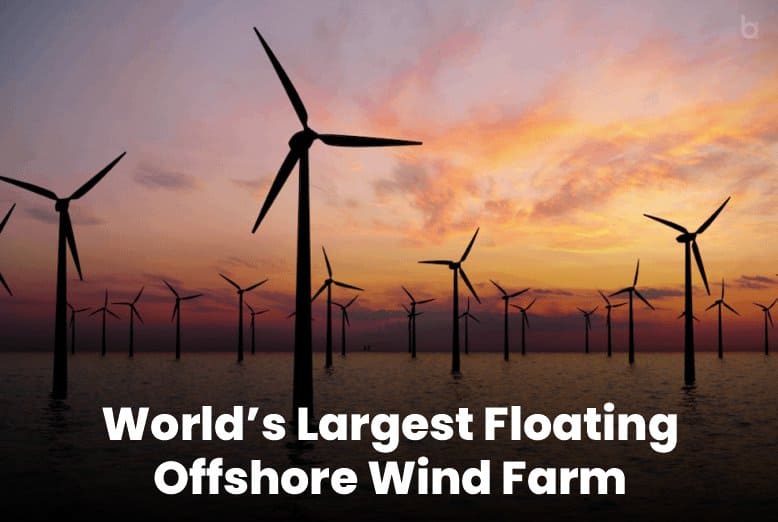Key Highlights:
- South Korean government will build the world’s largest floating offshore wind farm by 2030
- The project value has been set at $32 billion and will generate 2,10,000 job opportunities
- With the wind farm project, South Korea will stand as one of the world’s top five offshore wind producing countries
Generated Electricity to Power 5.7 Million Houses
Due to the global climate crisis, a lot of nations are switching to sustainable methods of functioning. Countries like China have adopted ‘Green Financing’ to reduce their carbon footprint in the upcoming years. Sustainable practices have become the need of the hour as global warming and other environmental factors are taking a toll on the life processes of the planet. A lot of technological companies are researching on harnessing energy from renewable resources to practice sustainability.
After the announcement of building the world’s biggest offshore wind farm, the South Korean government announced that it is aiming to build the world’s largest floating offshore wind farm.
The Floating Offshore Wind Farm Project
According to President Moon Jae-in, the South Korean government has taken an initiative of practicing sustainability by harnessing energy via water resources. President Moon Jae-in announced that South Korea will be building the world’s largest floating offshore wind farm to develop clean energy. The project will generate enough electricity to power 5.7 million homes. It will also bring massive reductions to annual greenhouse gas emissions by 9 million tonnes a year.
During a statement in Ulsan, president Moon quoted, “Sea winds are like carbonless petroleum in the 21st century. Large scale offshore wind farms will bring us a shortcut to achieve carbon neutral and provide us with new growth engines.”
Labelling the Ulsan offshore wind farm as a “shortcut” towards attaining green energy goals, Moon described that the sea had large potentials to generate enough energy to suffice the entire nation. He further added that the area for the wind farm has deep waters and an average wind speed of about 18 miles per hour. With the help of floating wind turbines to generate power, the turbines can be anchored in waters farther from shore where wind speeds are greater.
Project Value and Outcomes
President Moon stated that the entire project will be funded by both public and private finances, with its cost finalized at $32 billion. The new wind farm will harbour the generation capacity of 6 gigawatts, which accounts for about thrice the generation capacity of Australia’s largest coal plants. While the previous wind farm project was announced for South Korea’s southwest coast, the latest floating offshore project is planned to be installed off the coast of Ulsan, the industrial city to the southeast of South Korea. The project completion has been scheduled by 2030 and also aims at generating nearly 2,10,000 job opportunities.
“Ulsan will leap forward from the industrial capital of the fossil fuel era to the industrial capital of the clean energy era. Ulsan’s floating offshore wind farms will become oil fields on the sea and open the future of an energy powerhouse,” quoted president Moon during a statement released on May 5.
South Korea’s Advent Towards Carbon Neutrality
A majority of nations are heading towards attaining carbon neutrality by introducing sustainable reduction approaches of carbon emissions. As the world’s fourth-largest economy, South Korea is majorly reliant on coal for energy production which accounts for more than 40% of the country’s power.
In October 2020, South Korea joined other nations to pledge for omitting greenhouse gases and achieving carbon neutrality by 2050. In February 2021, the South Korean government announced its plan of building the world’s largest offshore wind farm near the southwestern city of Sinan that would harbor a generation capacity of 8.2 gigawatts. According to officials, South Korea’s latest floating offshore project will make the country stand as one of the world’s top five offshore wind-producing countries over the next decade.
Also Read:- Top 5 Educational Reforms around the World






















